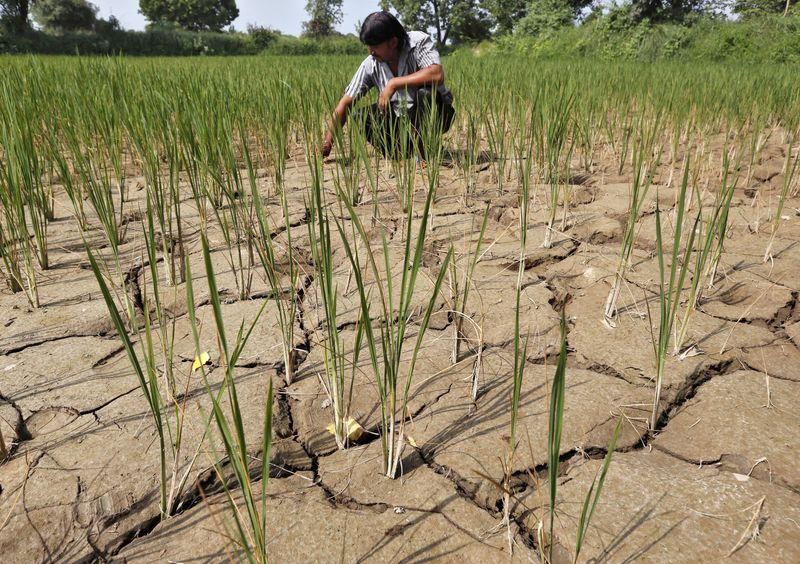
Explanation – How El Nino may affect world weather in 2023-24
Countries are scrambling to prepare for extreme weather later this year as the world enters El Niño — a natural weather phenomenon that fuels tropical cyclones in the Pacific Ocean and raises the risk of rain and flooding in the U.S. and elsewhere.
On Thursday, the US National Oceanic and Atmospheric Administration (NOAA) announced that El Nino is now underway. A cooler La Nina pattern has dominated the last three years.
Scientists say this year is very worrying. In 2016, when a strong El Nino was in full swing, the world recorded its hottest year ever. Meteorologists expect this El Nino, coupled with extreme warming from climate change, to battle the world’s highest temperatures on record.
Experts are also worried about what is happening in the ocean. El Nino means that the waters in the eastern Pacific Ocean are warmer than normal. But before this El Niño began, in May, the average global sea surface temperature was 0.1C (0.2F) warmer than before. It is fueled for extreme weather conditions.
“We’re in unprecedented territory,” said Michelle L’Heureux, a meteorologist with the NOAA Climate Prediction Center.
El Niño could lead to $3 trillion in global economic losses this year, with extreme weather destroying agricultural production and productivity and helping to spread disease and plummeting GDP, according to a study published last month in the journal Science.
Governments in vulnerable countries are taking note. Peru has earmarked $1.06 billion to deal with the effects of El Niño and climate change, while the Philippines – threatened by typhoons – has created a special government committee to deal with the predicted effects.
Here’s how El Nino will develop and what weather to expect:
What causes El Niño?
El Niño is a natural climate pattern that results from unusually warm waters in the eastern Pacific Ocean.
It forms when the east-to-west trade winds in the equatorial Pacific slow down or reverse as air pressure changes, though scientists aren’t entirely sure what triggers the circulation.
As the trade winds affect surface water warmed by the sun, this warm western Pacific water flows back into the cooler central and eastern Pacific basins.
During the 2015-16 El Niño – the strongest event on record – anchovy stocks off the coast of Peru collapsed amid these warm waters. Almost a third of the coral reefs on Australia’s Great Barrier Reef died. In water that is too warm, corals excrete living algae, causing them to become chalky and white.
This accumulation of warm water in the eastern Pacific Ocean carries heat through increased convection into the atmosphere, creating thunderstorms.
“When El Niño moves that warm water, it moves into the area where thunderstorms form,” said NOAA meteorologist Aphil DeLiberto. “That was the first atmospheric domino to fall.”
How does El Niño affect global weather?
This shift in storm activity affects the flow of fast-moving air that moves weather around the world — called the subtropical jet stream — pushing its path south and straightening it into a flat stream that provides similar weather at the same latitudes.
“If you change the direction of the storm track … you change the weather we expect,” DiLiberto said.
During El Niño, the southern United States is cooler and wetter, while parts of the western United States and Canada are warmer and drier.
Hurricane activity is decreasing as storms do not form due to wind changes in the Atlantic Ocean, sparing the United States. But tropical cyclones are getting a boost in the Pacific, with storms often turning toward vulnerable islands.
Parts of Central and South America experience high rainfall, although the Amazon rainforest generally suffers from drier conditions.
And Australia is experiencing extreme heat, drought and wildfires.
El Niño could provide an outlet for the Horn of Africa, where five consecutive rainy seasons have recently failed. El Niño brings more rain to the Horn, in contrast to the triple La Niña that dries out the region.
Historically, El Niño and La Niña occur on average every two to seven years, with El Niño lasting 9 to 12 months. La Nina, which occurs when the water in the eastern Pacific cools, lasts for one to three years.
Does climate change affect El Niño?
How climate change might affect El Niño is a “huge research question,” DiLiberto said. Whether climate change doubles the effects of El Niño — heat on top of heat, or plenty of rain on top of plenty of rainfall — is unclear whether climate change is affecting the phenomenon itself.
Scientists aren’t sure if climate change will alter the balance between El Niños and La Nina. If ocean temperatures rise across the board, the circulation is unlikely to change because the basic dynamics behind the phenomenon remain the same, the scientists said.
But if some parts of the ocean warm faster than others, that could amplify temperature differences and affect how El Niño continues.

“Coffee fanatic. Friendly zombie aficionado. Devoted pop culture practitioner. Evil travel advocate. Typical organizer.”
